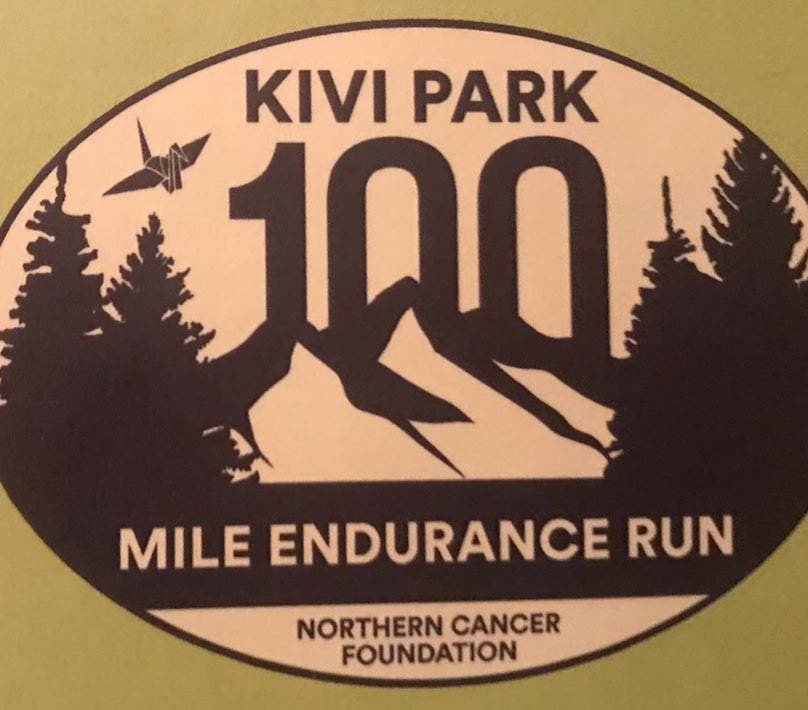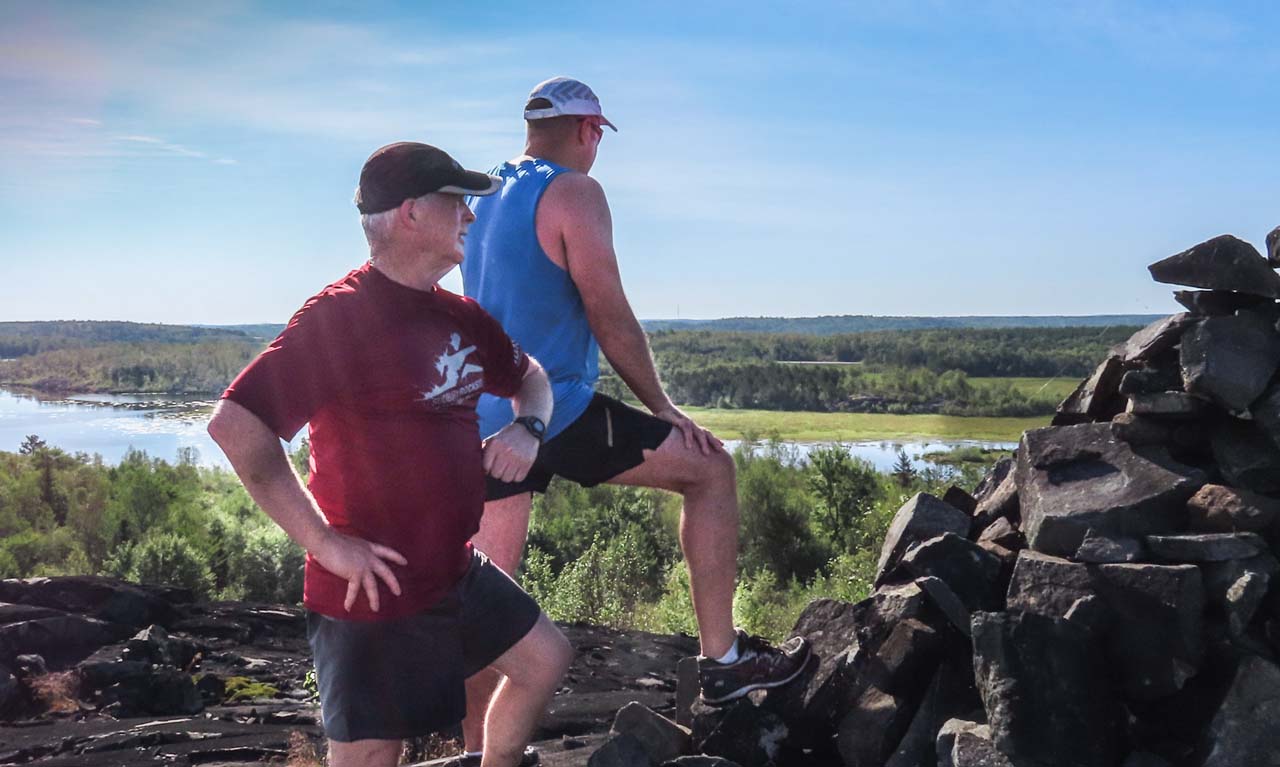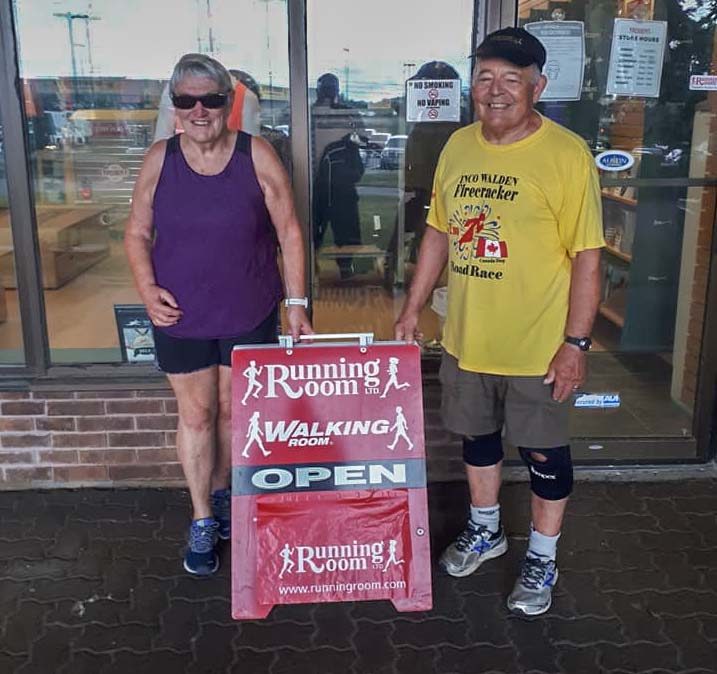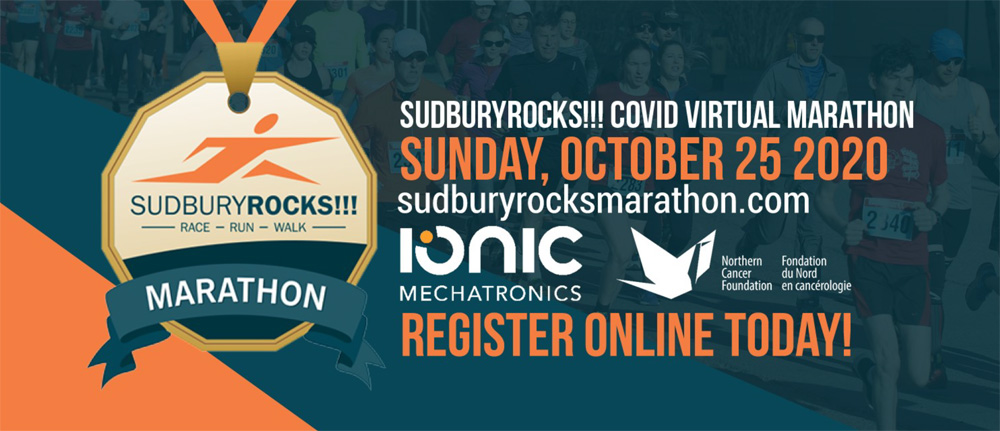Like many others, I was
registered for a 2020 marathon, the London Marathon
originally scheduled for this past April. Before the
stay-at-home orders went into place, I was tackling
double-digit miles on Saturday mornings and booking
flights, excited to cross off my ninth 26.2-mile race.
But then, everything changed.
When the race got postponed,
I too felt my motivation go out the window. For runners
everywhere (myself included), a finish line in the
near future is essential to motivate you to train
regularly. The good news? There are plenty of other
goals you can set to incentivize yourself.
“Just because in-real-life
racing may be off the table for now, that doesn’t
mean you can’t be excited about running,”
says Sam Tooley, endurance coach based in New Jersey
and owner of Alpha Fit Club. “Just getting out
the door for a run is a big win, but getting out that
door is easier when you have multiple motivating factors
to keep you accountable.”
Goals aren’t just
motivating and fun to have, but research shows that
they also help stave off burnout and anxiety. Plus,
if you share a goal with a friend, research from Ohio
State University shows that doing so could increase
your commitment and overall performance.
Here, experts weigh in
on different running goals that can bring more joy
into your regular runs, all of which are safe to tackle
on your own or with the help of a virtual community.
In the middle of the
coronavirus outbreak, it’s important to ensure
you execute all of these goals safely by maintaining
a distance of at least six feet or more from others,
washing your hands regularly, avoiding touching your
face, and wearing a mask in public settings or if
you can’t maintain distance from others. This
is a rapidly developing situation, so for the most
up-to-date information, check in with your local health
officials and resources like the Centers for Disease
Control and Prevention (CDC) regularly.
New
Goal: Run Without Tech
Many of us run with running watches to keep track
of essential stats such as pace, distance, and heart
rate. But running “naked,” or without
tech, is an entirely different, freeing experience,
one that may feel a little odd at first, but that
you’ll be grateful for once the miles are complete.
“Every once in
a while, it’s good to give yourself a tech detox,”
says Roberto Mandje, Senior Manager of Training and
Education for New York Road Runners. “You’ll
find you’re less tempted to chase a certain
pace and instead are more likely to run by listening
to your body’s many cues.”
While you may wonder
how fast or far you’re running, Mandje highlights
that this is an opportunity to become better in tune
with your body, zone out a bit, and truly disconnect.
Best-practice
tip: Run by minutes rather than mileage.
Instead of obsessing over a run that’s 3.7 miles
instead of a neat 4, Mandje recommends trying out
a run based on time. “Go out for 30 minutes
and don’t worry about the pace,” he says.
“As long as you’re running by feel and
at a comfortable rate of perceived exertion, you’ll
become more in tune with relative efforts as you’ll
have to rely on your body’s constant feedback
versus the time and distance you typically gauge from
your GPS watch or app.”
New
Goal: Pick Up Your Mile Pace
Distance runners may scoff at the idea of racing a
single mile, but if you’re willing to put in
the work and pick up the pace, racing a mile can prove
to be a challenging objective.
There are good reasons
for doing it, too. Getting into tip-top shape for
a fast mile will improve your overall running economy,
which can pay off at every distance from 5K to marathon
times, says Emilio Flores, endurance coach and founder
of Even, an online coaching platform for endurance
athletes in Mexico and Latin America.
Plus, picking up the
pace can help you improve your running form, he adds.
“A lot of runners tend to change their technique
to a more refined one in order to go fast,”
says Flores. “If you can translate some of these
parameters like (vertical oscillation, cadence, and
ground contact time) from your mile pace to your marathon
pace, even a small increase in cadence will make you
more efficient.”
Best-practice
tip: You’ll want to know exactly where
you’re starting out so that you can set a smart
goal for where you want to be, says Flores. That means
you have to run a mile as fast as you can to find
your baseline (just be sure to warm up before and
pick a stretch of road you can repeat the effort on).
Depending on the athlete,
Flores says that it’s possible to cut down 30
to 40 seconds over two months of training, but there
are some other things to keep in mind: “A mile
may feel quick, but oftentimes, individuals go out
too fast in the first half-mile, which means that
the execution is flawed. Your training is the key
component, where you’ll really learn to master
both sides of the mile, building speed and endurance.”
He recommends three days
of regular running and two days of speed workouts.
Before each, make sure to warm up and cool down properly.
New
Goal: Top Your Longest Long Run
Long is relative, so before you decide to go “long,”
you must be aware of what sort of training you’ve
done beforehand and what base fitness and foundation
you have. This will help you avoid injuries by ramping
up your training too aggressively both in distance
and pace, says Mandje.
The rule of thumb is
not to increase your overall time on the road more
than 10 to 15 percent from one week to the next. So,
in practice, if you’re running for a total of
2 hours (120 minutes), you could safely add 12 to
16 minutes of running week over week. The same goes
for mileage. If you’re used to crushing 10 to
12 miles in your long run, adding an extra 1 to 1.5
miles the following week would be safe.
Best-practice
tip: Build up and down (or high and low)
weeks into your training plan. As you gradually build
up to your chosen distance, you’ll need to have
high- and low-mileage weeks in order to allow your
body to properly recover and absorb the many stresses
of training, says Mandje. And above all, run the long
run at an easy effort; this goal is about distance,
not a new time-based PR.
New
Goal: Run in New Places
Again, you want to be sure you can do this safely
right now (for example, some states are issuing travel
advisories and enforcing 14-day quarantines for anyone
returning from travel to states with a significant
degree of community-wide spread of COVID-19.).
Still, getting out to
new areas within your own city and state and diversifying
your route could be the secret to injecting more joy
into your workouts. Aim to try one new place a week,
suggests Tooley, adding that depending on where you
live, driving a short way to enjoy a different run
or route is worthwhile.
Best-practice
tip: If you’re going to be farther
away from home than usual, make sure you’re
familiar with the specifics of your route. This way,
you’ll feel more comfortable, and can focus
more on enjoying your run than worrying about making
a wrong turn. You may also want to pack some extra
food and water to have when you finish in case it
takes you a while to get home.
New
Goal: Run More Frequently
If you only manage to get out once or twice a week,
now’s the time to boost the habit. Set a specific
goal for how many times you’d like to run each
week, and then put it in your schedule, suggests Tooley.
Just like with adding
more time or distance to your run, upping your volume
means you need to be smart about just how much mileage
you’re building. The key is to increase your
frequency but slowly build on total time and mileage.
“You want to run more frequently because it
brings you joy, which means you need to play the long
game,” he adds. “There’s nothing
worse than sitting on the sidelines because you did
too much too soon.”
Best-practice
tip: If you’re aiming to run four days
per week for 30 minutes each, for example, make sure
to allocate more than 30 minutes into your schedule
for the activity, suggests Tooley. “Think about
the time you need to prepare for this run, warm-up,
cool-down, and regroup before getting into your next
activity,” he says. “Sometimes, I’ll
plug in 60 or 90 minutes for a run, even though the
run itself may only be 30 minutes. This way, I don’t
feel rushed or guilty about the other things on your
to-do list. When you feel rushed, that’s when
you start to make excuses.”
EMILY ABBATE
EMILY ABBATE IS A FREELANCE WRITER, CERTIFIED FITNESS
TRAINER, AND HOST OF THE PODCAST HURDLE.










219.jpg)


500.jpg)





































